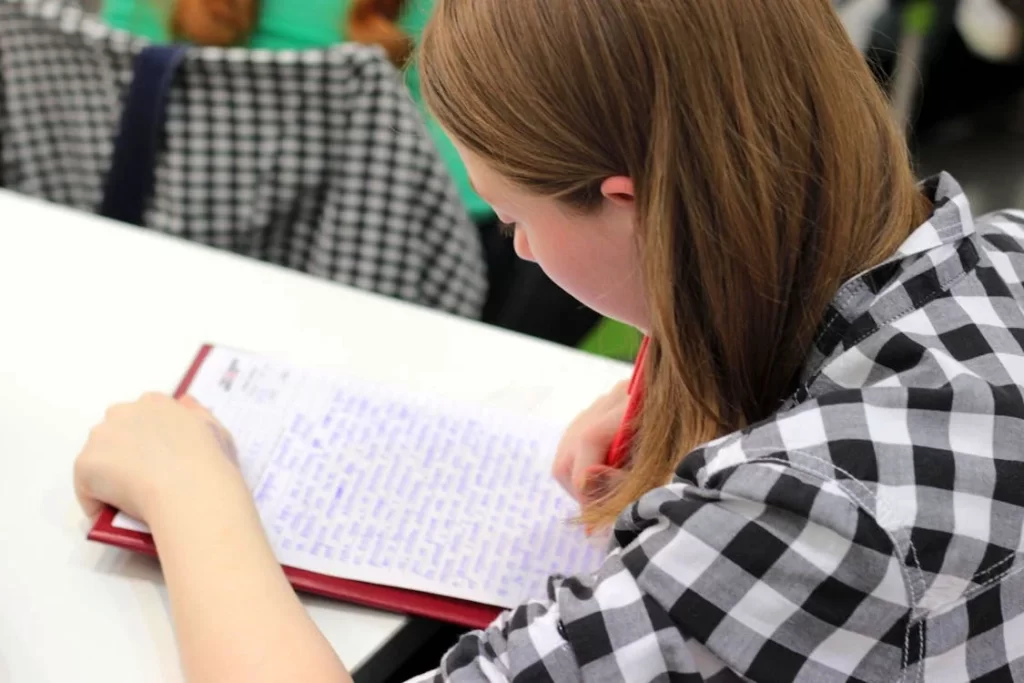Description: In this blog article, qualified Languages teacher Caitlin, shares with us how to memorise vocabulary using different learning techniques.
When learning a new language, especially for the first time, students tend to spend hours making flashcards and studying them using rote and spaced learning techniques.
Many flashcard apps have these techniques built, and while memorising vocabulary is certainly a crucial step in mastering a language, research suggests that vocabulary is best learned when it is given context (Casselman, 2024, Journal of Classics Teaching).
We’ve all felt frustrated after spending hours learning thirty-something vocabulary items.
Only to find that a few weeks later, when we encounter those words again, especially ‘in the wild’, we no longer recognise them or just can’t quite recall those pesky, easily confused little words.
There must be a better way to memorise vocabulary, right?
Below are some suggestions for learning vocabulary that will not only train your memory but also lead to longer and more meaningful recall.
Use Dual-Coding Flashcards
Dual-coding is a well-established learning theory.
The idea is that we remember things better when we learn through both visual and verbal input.
Nobody is saying don’t make flashcards, but you can take your flashcards to the next level using pictures alongside words.

Let’s say you’re memorising members of the family for a French vocabulary test.
Why not take pictures of your family (ideally funny ones!) and stick them to each flashcard, alongside the French and the English?
This will give the words you are learning an emotional context which is linked to long-term memorisation.
It makes sense when you think about it.
We remember significant events in our lives, like birthdays, or our first day of school, because we were emotionally invested in that memory.
The same theory can apply to something as simple as memorising words!
Another great way to make powerful flashcards is to draw pictures yourself. This adds another dimension to the attention you pay to learning the word.
Just writing out your list from the textbook, or the sheet a teacher gave you means you don’t spend enough time thinking about the words you’re learning.

By drawing, you not only create a context for recall, but you force yourself to think about what that word means.
This is called ‘semantic context’ and will make the initial learning encounter so effective, that you will find you spend a lot less time memorising the list.
Using a flashcard app? Why not add audio content to your flashcards too? This helps you practice your pronunciation and gives you another way to embed your vocabulary into your long-term memory.
Play ‘in the photo’
Dans la photo, en la foto, nella foto, Im Foto … whatever your target language calls it, this a great way to start using the vocabulary you learn in class.
The game is simple. Take a photo from a magazine, book, old postcard – whatever you can get your hands on – and start labelling it.

At first, don’t use any prompts.
See what you can remember and try to label everything.
If there are people in the photo, don’t forget to label what they are wearing, eye colour, hair colour, family members, friends, and anything in the background.
If the photo is of a landscape, try describing it in as much detail as possible and don’t forget the weather!
When you’ve done your very best, start looking up anything in the photo you missed and add labels in a different colour. That way, you can create a vocabulary list of the things you didn’t remember.
Voilà! You have given your vocabulary a recall context that is much more likely to stick in your memory than a blank flashcard, no matter how long you’ve spent looking at it.
As many foreign language exams involve a photo section, this is also a great way to practice exam techniques.
Write a Short Story
Why spend hours memorising a list when you could be creative? Creativity engages our brain at a much deeper level and therefore triggers our memory much more effectively.
Instead of making flashcards, try writing a short story instead. The story doesn’t all have to be in the target language.
This would be especially daunting if you are just a beginner and haven’t quite got to grips with enough grammar to write in full sentences.

Instead, you can write the short story in English but leave gaps for the vocabulary you are trying to learn.
Look at this example for some Italian food vocabulary:
Zuppa – Soup
Pomodoro – Tomato
Carotta – Carrot
Cipolla – Onion
Today, I discovered my grandma’s secret zuppa recipe.
I couldn’t wait to try it! The first step was to buy the Pomodoro and blend them. Next, I pulled a fresh carotta from the garden and diced it. Cutting the cipolla made me cry…
Even better if you can use that dual-coding technique and make a storyboard to go along with it!
Keep Running Vocabulary Lists
When mastering a language, it’s important to immerse yourself in that language as much as you can.
The best way to do this when you can’t visit that country is to read as much as possible in the target language.

You can start with some children’s literature and gradually work your way up to harder texts.
Reading provides you with a context to the words you are learning. As you encounter new vocabulary, keep a ‘running’ list of any words that you had to look up.
In a day or two, go back to the text and read it again. You’ll find this helps to reinforce the words in your memory. Keep doing this until you don’t have to look at your list anymore to read the text!
Final Note
In short, we’re saying: work smarter, not harder!
By making these techniques part of your routine when learning vocabulary, you will be able to recall vocabulary more spontaneously, learn more consciously, and acquire a broader range of vocabulary.
By tutor Caitlin. Contact Us




